
hotline:
17715390137
Tel/Wechat:
18101240246 (Technology)
0512-68565571
Email:mxenes@163.com (Sales Engineer)bkxc.bonnie@gmail.com
Scan the code to follow or search the official account on WeChat:
2D Materials Fronrier After paying attention,
click on the lower right corner to contact us,
Enter enterprise WeChat.
Professional Services Online

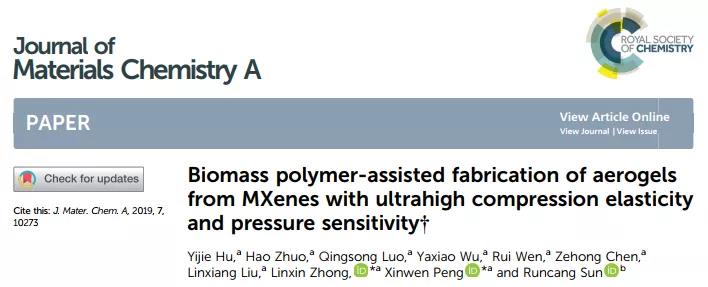
[Background introduction]
A compressible, elastic carbon aerogel (CECA) can be assembled into a piezoresistive sensor that converts external pressure or strain into a current signal due to its application in human-machine interfaces, biomedical monitoring and motion detection Great attention. However, without microstructure engineering, these CECAs may exhibit nonlinear sensitivity and unsatisfactory mechanical properties. Therefore, the high sensitivity necessary to distinguish small changes in pressure or strain sensors is still a huge challenge for current CECA.
[Achievement Profile]
Recently, Associate Professor Zhonglin Xin of South China University of Technology and Professor Peng Xinwen‘s research team collaborated to report a lightweight, compressible, conductive, made of polymer (chitosan) connected Ti3C2 nanosheets into continuous and ordered sheets. Aerogel. Due to the connection, the foil is flexible, highly compressible and structurally stable. These properties enable the aerogel to withstand extremely high strains (99%), long-term compression (up to 150,000 cycles), and repeated bending. In addition, due to the unique layered structure, aerogels exhibit ultra-high sensitivity (80.4 kPa-1) and an exceptionally wide linear range (within the strain range of 0.5–70%). This work was published online in Journal of Materials Chemistry A: Biomass polymer-assisted fabrication of aerogels from MXenes with ultrahigh compression elasticity and pressure sensitivity.
【Graphic guide】

Figure 1: (a) Schematic diagram of making MXene and CSx / MXene-C aerogels. (B) SEM image of MXene on AAO template. (C) TEM image of MXene. (D) Magnified TEM image of MXene. (E) Selected area electron diffraction (SAED) mode of MXene.
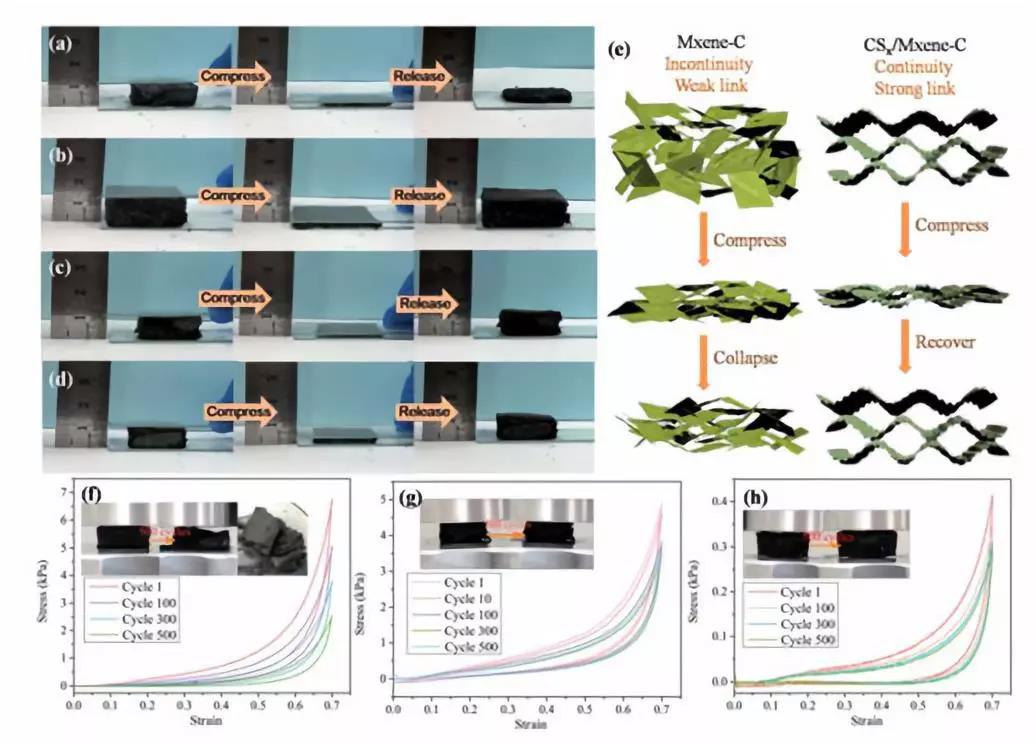
Figure 2 (a–d) shows the compressibility and elasticity of MXene-C, CS1 // MXene-C, CS5 / MXene-C, and CS10 / MXene-C, respectively. (E) Resilience mechanisms for MXene-C and CSx / MXene-C, respectively. (F–h) are the stress-strain diagrams of CS10 / MXene-C, CS5 / MXene-C, and CS1 / MXene-C.
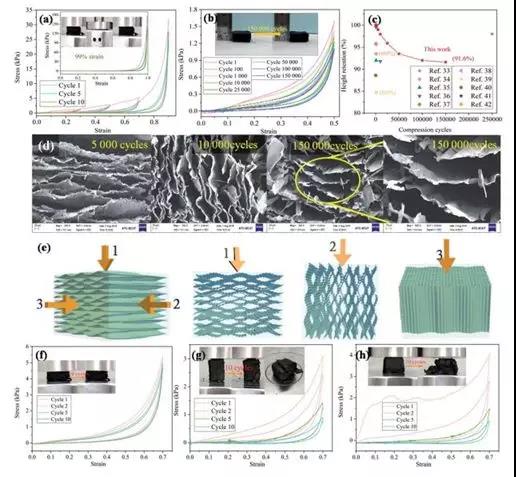
Figure 3 CS5 / MXene-C‘s super compressibility, elasticity and fatigue resistance. (A) Stress-strain diagrams for 10 cycles under different compressive strains. The inset shows extremely high compressibility (99%) and elasticity. (B) Stress-strain diagram for up to 150,000 cycles at 50% strain. The inset shows images of CS5 / MXene-C before and after the cyclic compression test. (C) The ability to maintain height during 150,000 compression cycles at 50% strain and compare with other compressible materials. (D) SEM images of CS5 / MXene-C after 5000 cycles, 10,000 cycles, and 150,000 cycles, respectively. (E) illustrates the process of compressing CS5 / MXene-C by applying stress in different directions. (F–h) compressive stress-strain diagrams from the top, side, and front directions, respectively.
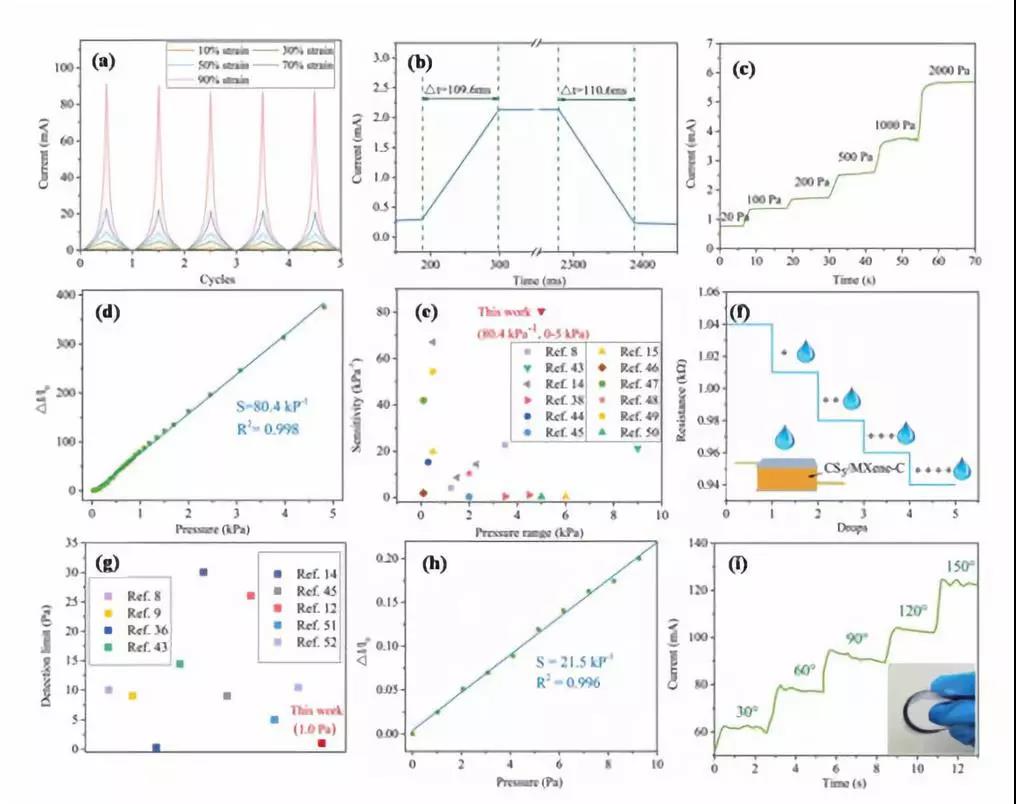
Figure 4 Strain / pressure response and sensitivity of CS5 / MXene-C. (A) Real-time current under different compressive strains. (B) Response time and recovery time. (C) Current change in pressure in the range of 100 Pa to 2000 Pa. (D) Ultra-high linear sensitivity over a wide pressure range of 0–5 kPa. (E) Comparison of the sensitivity of CS5 / MXene-C with other sensing materials. (F) The relationship between resistance and water droplets. (G) Comparison of pressure detection limit of CS5 / MXene-C with pressure limits of other sensing materials. (H) Linear sensitivity at 0–10 Pa. (I) The relationship between real-time current and bending angle.
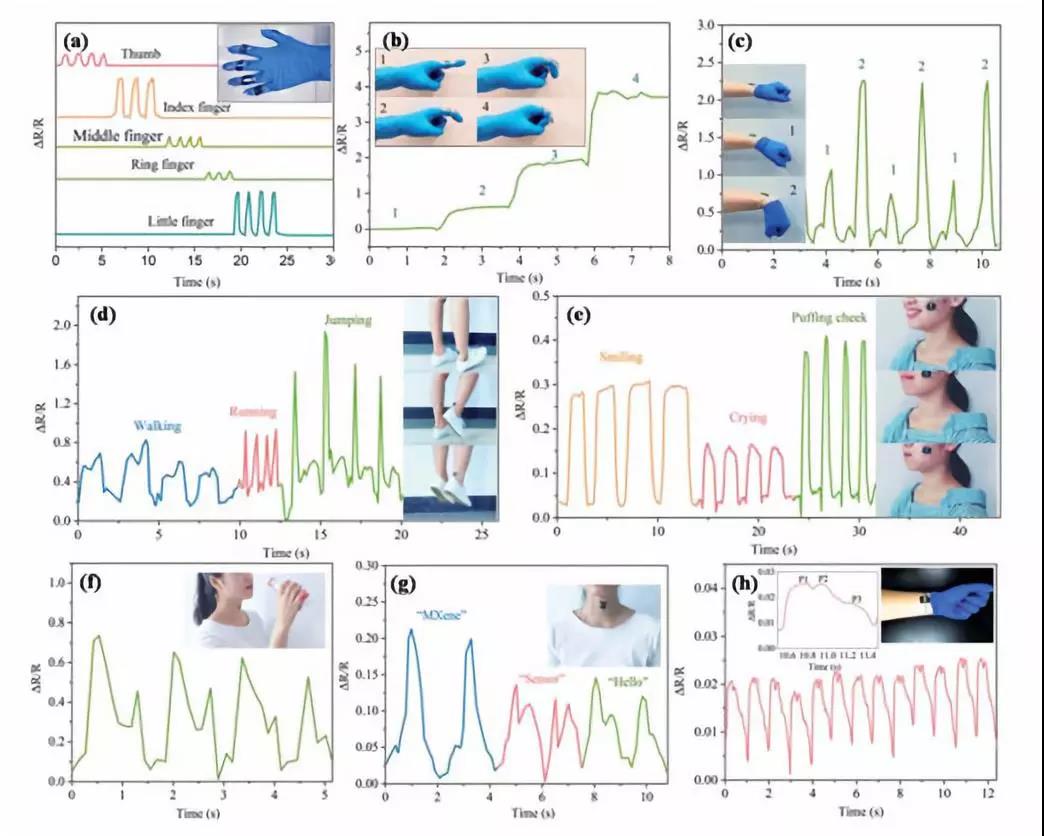
Figure 5 CS5 / MXene-C sensor is used to detect biological signals. (A–h) Electric currents generated by bending of different fingers, different degrees of bending, bending of wrists and heels, facial expressions, drinking water, speaking, and pulse.
[Summary of this article]
By connecting the MXene sheet with CS-derived carbon fibers, a lightweight layered aerogel can be successfully manufactured. Compared with current carbon-based pressure-sensing materials, MXene-based CECA has the following advantages: 1. Layered structure with directional and corrugated carbon layers. 2.The aerogel has a stable layered structure with a continuous and flexible wavy carbon layer, which results in extremely high compressibility (99% strain), superelasticity (150,000 compression cycles) and repeated bending. Due to the large compressible space between the corrugated layers and the stable layered structure, it has super high sensitivity and has very low detection limits for pressure and strain. These advantages make aerogels a promising candidate for pressure / strain sensors and wearable devices.
Literature link:
DOI: 10.1039 / c9ta01448a

| Reminder: Beijing Beike New Material Technology Co., Ltd. supplies products only for scientific research, not for humans |
| All rights reserved © 2019 beijing beike new material Technology Co., Ltd 京ICP备16054715-2号 |